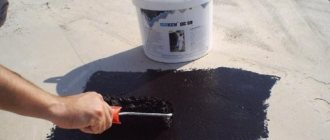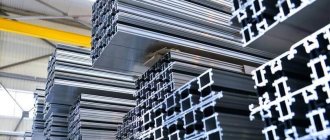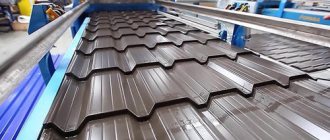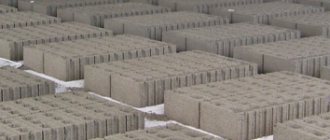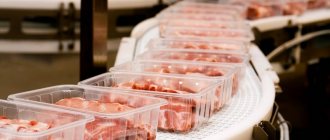LED lamps are confidently displacing uneconomical incandescent lamps from the market, this is facilitated by the adoption of a law banning the sale of products that consume electricity over 75 W.
An increase in demand is observed both from large industrial enterprises and from individuals. LED lamps are becoming an integral part of the interior; designers are using them to their advantage; moreover, they significantly save energy and have a long shelf life. All this creates favorable conditions for business development, and the main investment - a LED production line - pays off in two years.
LED lamps are popular for their efficiency and brightness
Another advantage for investors is the lack of competitive domestic enterprises. The bulk of the products are Chinese imports, only every fifth light bulb is produced in Russia. The lack of competition is explained by the complex technological process and the cost of capital investment. Also, production requires qualified personnel with an appropriate level of payment, which increases the cost and retail price of lamps. Chinese products are cheap and mostly of low quality, so when organizing a business you should focus on quality and original design.
Where to start producing LEDs?
To organize the production of LEDs, you need a building with a total area of at least 3.5 thousand sq.m. If we talk only about the assembly area, then 200 sq.m. is enough for this. All premises must be equipped with ventilation systems. The main thing in the production of electronic products is cleanliness. Most likely, the workshops will need to be renovated in order to achieve ideal cleanliness in the future. Any particles of dirt and dust that enter the premises will significantly reduce the quality.
Production of LED lighting devices.
Production technology
The production of LED products can be divided into several technological stages:
- Development and growth of crystals and epitaxial wafers (chips). This is a knowledge-intensive process. Making a chip production shop from scratch is unprofitable and impractical. In Russia there was only one company that was engaged in a similar type of activity (Svetlana-Optoelectronics). However, as of 2020, she has been declared bankrupt. It is best to buy ready-made chips abroad.
- Assembly of LED modules. The finished chips are fed in the form of plates on adhesive tape to a small machine. An optical sensor calibrates suitable elements, and an electric knife makes a cut of the required size. The finished elements are fixed to the power board using glue. Soldering of the contact group of the electronic circuit and the chip also takes place here. The last stage of assembly is installing the board with the crystal into the lamp bulb.
- Quality control. This technological stage passes through all stages. Initially, the suitability of the raw materials is checked. The second stage is to check the quality of soldering and assembly of the crystal with the electronic circuit. The last step is to check the already assembled lamp for flickering, the level and amount of light emitted, and the presence of mechanical or other defects.
- Packaging of finished products. It is most profitable to order boxes and other paper products from a printing house.
Almost 50% of the cost of a finished LED lamp is the crystal itself, which will have to be purchased abroad.
Raw materials
Growing crystals is a rather expensive activity. Therefore, it is easier and more profitable to buy them from such suppliers as: Bridgelux, Chimei, Cree Epistar. It is best to go to factories directly and buy chips from them in large quantities at a favorable price.
Circuits and flasks can be ordered from local manufacturers. However, to reduce production costs, it is worth considering Chinese factories. Even with customs and other fees, their products may become cheaper. It is important to take this into account in the early stages of business development.
Process description
The manufacturing process can be divided into three separate components:
- Assembly of ready-made modules. A small line where they will cut chips from tape and solder them to an electronic board. In this area, you can organize two working areas: cutting and soldering. The number of employees depends on the volume of products produced.
- Assembly of lamps. Installation of ready-made modules into lamp bulbs. You can place one worker here.
- Package. The resulting lamps are installed in a special substrate and packaged in a cardboard box.
In addition, the entire process must involve a person who will check the quality of the assembly at each stage. This can be an individual specialist, or an employee who performs assembly or packaging.
How much money do you need to start a business?
In addition to the workshop, it is necessary to allocate storage facilities, a product acceptance and control area and offices. The simplest business option is an enterprise where LED lamps will only be assembled. The basic investment in this project will be about 5 million rubles. Experts determine the profitability of a business at 130%. The payback period for such a mini-plant is about two years. All these indicators can be achieved only if all LED products are fully sold. As a result, the following calculations are obtained.
| Project Options | Values |
| New equipment | 10 million rubles |
| Used equipment | 2-6 million rubles. |
| Start-up capital | 5 million rub. |
| own funds | 60% |
| credit | 20% |
| target investment | 20% |
| profit | 40-100 thousand rubles. |
| Paperwork | 10-15 thousand rubles. |
| Raw materials | 100-500 thousand rubles. |
| Income | 200-500 thousand rubles/month |
| Benefit | 130% |
| Payback | 24 months |
When planning sales and determining pricing policy, it is worth considering that the cost of your products will always be higher than goods from China. This is due to the high cost of labor. The Chinese save significantly due to this cost item. Only their undeniable quality and reliable equipment for the production of LEDs will help our LED products to gain a strong foothold in the market .
Product Features
The full LED production cycle begins with growing crystals. This process is the most difficult and expensive to implement. The main difficulties are related to the need to solve the following problems:
- purchasing equipment that costs millions of dollars;
- hiring highly qualified specialists of narrow specialization with high wages;
- creating appropriate conditions for crystal growth (primarily absolute purity).
In this case, the duration of crystal growth until the required parameters are achieved will be several years. In addition, there are many more subtleties of this technology that are carefully hidden by each manufacturer. Therefore, we can only speak in general terms about the production of LEDs from scratch.
This industry in Russia lags significantly behind the level of development in European countries, since it is still in its infancy. There are only three Russian companies involved in growing crystals:
- LLC "LED-Energoservice" (trademark "Optogan"), St. Petersburg;
- JSC "NIIP", Tomsk;
- JSC "Planet-SID", V. Novgorod.
All other enterprises in this industry are engaged in the production of LED products based on purchased raw materials.
It will be more realistic to open a similar in-house production of an incomplete cycle, since this will require, although very significant, but still acceptable investments. In any case, the scale of the business must be significant, since small volumes will not cover all fixed costs.
The direction of activity in this area may be different, depending on the type of product being manufactured. Classification of LED lamps is carried out according to the following criteria:
- installation location - outdoor, indoor;
- type of luminous flux distribution - directed or diffused light;
- fastening method – stationary, portable;
- power source – network, battery, combined.
Each of these types may vary in degree of safety, level of protection and other characteristics.
An enterprise can specialize in the production of one or several types of products, but the most profitable option will be the one with the widest possible range. In this case, it is necessary to decide on the organization of the production process. In addition to the indicated full cycle, which involves the manufacture of LED devices from growing crystals to independent production of housings and assembly of products, 2 simplified options are possible:
- incomplete cycle - includes the creation of LEDs from imported chips with crystals and the subsequent assembly of lamps;
- short cycle - based only on the assembly of lighting fixtures from fully purchased raw materials.
Short-cycle enterprises are characterized by the lowest entry threshold. But they require higher monthly costs for the purchase of raw materials, so they provide low profits. The optimal choice for the Russian market would be to create a company for the production of part-cycle LEDs. The advantages of this business include stable demand for products and a low level of competition.
LED lamp manufacturing technology
The technology for their production is labor-intensive. You need to be a specialist in this field in order to competently build the entire process and plan activities. There are several working stages:
| Work progress | Tasks |
| First stage | manufacturing microcircuits on a silicon wafer |
| Second phase | chip binning |
| Third stage | assembly |
| Fourth stage | quality control |
Silicon wafers, which are obtained from crystals grown under special conditions, are quite difficult to produce. This requires special and expensive equipment. Its purchase and installation cost millions of dollars. Therefore, for small and medium-sized businesses, you can limit yourself to a factory. It is on this that LED diode lamps are assembled.
New generation LED lamps.
There are several standard designs of LED modules for lamps. They differ in the design of the crystal, the “crystal body” interface, and the design of the lens. The most commonly used modules are those that are suitable for easy installation. Even today they produce LED modules that are mounted directly on the board.
The main problem when using LED devices is their overheating. Therefore, one of the main tasks is to ensure reliable heat dissipation in the product. Today there is no need to “reinvent the wheel”. Most standard products can be made under license. New technologies make it possible to produce new LED devices that can be easily replaced if necessary.
Equipment for starting the line will require the following devices:
- equipment for measuring and monitoring parameters of finished products;
- assembly tools and equipment;
- add. tools, furniture and equipment.
It is customary to purchase the entire assembly line from one supplier. It will be easier to maintain and repair. Chinese equipment is also suitable for starting a business. Its base price is about 10 million rubles. The option of purchasing used equipment will help you save money. The main thing is to check that it is in working order and has not completely exhausted its resource. The more the line operates in automatic mode, the less personnel will be needed to service it.
Since we are talking about a small but full-fledged production, we need to recruit staff. In addition to workers, a technologist and chief engineer will be needed. It is imperative to have an accountant and specialists in purchasing and marketing of finished products on staff. It’s never worth saving on good shots. And even more so for organizing complex production.
Thus, we can say that such projects, despite the impressive volumes and costs, provide high income and ensure a quick payback. Therefore, today this type of business occupies the first positions in the ranking of demand for business ideas. Moreover, as experience shows, Russian people love risk, which then brings good profits and a very secure future.
Organizational plan
The first thing you need to do is write down all the steps on paper. To organize a business for the production and sale of finished LED products, you will need from 500,000 to 1 million US dollars. The final amount will depend on a number of factors:
- region of production and the final cost of rent for the premises;
- volumes of finished products;
- places of purchase of raw materials;
- cost of delivery of equipment to the workshop;
- average salary level in the region;
- the presence or absence of its own sales department.
The average payback for an LED manufacturing business takes from 1 to 2 years. It is important to take into account that as the productivity of the workshop increases, the number of working personnel will increase. As a result, you will need a larger payroll.
If all production and business processes are properly established, then such production can generate income from 20% to 30% of turnover, taking into account taxes and other expenses. To conduct business, you will need official registration with the tax authorities. You will also need to obtain the necessary production certificates.
Legal registration and certification
To register a business, it is enough to register as an individual entrepreneur (IP). This level is for a small enterprise or workshop if you plan to supply LEDs to your region or work with several large contractors.
Access to the federal scale is only possible if a legal entity is registered. In the case of the production of LED products, you can register an “LLC” (Limited Liability Company). However, we should not forget that since 2020, part of the risks is borne by the founder of the organization. Therefore, it is important to clearly calculate a business plan for 2-3 years in advance, in all possible scenarios.
It is best to immediately register a company with a large authorized capital, as this will provide more opportunities to work with different companies and wholesale suppliers. To do this, you will need to collect documentation with which you will go to the tax authority:
- Application on form P11001;
- Application (decision) of the main founder to create a Limited Liability Company. If there are several founders, you will need to draw up minutes of the meeting of participants;
- Charter;
- Receipts for payment of state duty.
You will also need to pay: state duty (4,000 rubles), authorized capital (from 10,000 rubles), notary services, creation of a company seal (from 2,000 rubles), opening a bank account (on average from 10,000 rubles) .
The tax authority will assign the organization OKVED for conducting activities. In the case of the production of LED products, this is No. 27.4. After registering with the tax service, you must submit an appeal to the fire and sanitary epidemiological services. Supervisory authorities must issue permits for the workshop or work area where the finished product will be assembled.
LED products are a fairly new product, even on a global scale. There is still no single standard or certificate that would confirm the compliance of lamps with any standards and requirements. By and large, the manufacturer himself sets quality standards and controls their implementation.
However, in the Russian Federation, LEDs are products that are subject to mandatory certification. The presence of such a certificate confirms that your products meet safety and energy consumption standards. It can be obtained from a regional certification body accredited by Gosstandart. The specific list of documents for obtaining a certificate must be found in this structure. Surely you will need product test reports from independent expert organizations and precise product specifications.
Completing all registration and certification steps will cost 2-5 thousand US dollars.
Search for premises for a workshop
Manufacturing facilities can be located in a work or production area to save money on space rental costs. The average workshop for assembling LED lamps must be at least 300 m/sq. A fairly large number of staff will work there, so you shouldn’t skimp on space. The room should have a good exhaust hood and light. You also need to monitor frequent and sterile procedures. Especially in work areas for assembling finished modules. Otherwise you will get a lot of rejects.
If you plan to sell products yourself, you will need a separate room for a sales department. It can be combined with an office block, where the office of the director, accountant, and other specialists will be located. For shipment and storage of finished products, it is worth organizing a warehouse. It must be located on the same territory as the production workshop. This will relieve the financial and logistical burden. It is also worth taking care of access roads and parking for several cars.
Recruitment
The number of workers and their level of specialization depends directly on the products being manufactured, as well as on the automation of the assembly line:
- For a small production line of up to 5,000 lamps/day, you will need 6 workers in the workshop, a chief technologist, a packer and a loader. Sales of products will be provided by a small staff of managers of up to 3 people. Business activities will be closed by the purchasing manager, as well as the accountant. In the early stages of work, all production and financial matters can be controlled personally. As your business develops, you can hire a financial director who will be responsible for the “turnover” of business in the enterprise.
- Large production capacities are needed for full-fledged LED lamp assembly lines. Ready-made solutions can be found in China or Malaysia. To ensure the operation of such a workshop, a large number of workers will be required, since the assembly of finished products consists of 80% manual labor.
It is worth understanding that working capital, at best, will appear only for 2-3 months of your activity. Until this moment, you need to have a reserve of funds to pay wages to all employees.
What documents are needed to open
When opening small production facilities, it is best to register as an individual entrepreneur. To do this, an application and a photocopy of the passport are submitted to the registration authority, information about the identification number is provided and a state fee is paid for reviewing the documents.
For legal entities, a more impressive package of documents is provided. In addition to the above, you will additionally need to provide the Charter and resolution of shareholders, legal address and information about the director and chief accountant. The legal address is the address where the production facilities are located.
Necessary equipment
Equipment for the production of LED lamps is the main cost item in the process of organizing production activities.
The main element of equipment is the apparatus for mounting crystals. Various high-tech models of machines are used. The most popular is the 2200 evo automatic machine, which has the following characteristics:
- the thickness of the crystals used is up to 7 mm;
- device weight - 1299 kg;
- productivity indicator - more than 4900 products within an hour;
- substrate parameters - 33.02*20.32 cm;
- the maximum heating temperature of the device is 3490C;
- machine dimensions - 120*200*122.5 cm.
Installation 2200 evo
For production, measuring equipment will be required. It uses a special stand with cartridges mounted inside. Measuring equipment is used to control the quality of the resulting product. Additionally, you will need equipment designed for assembling lamps.
Not in all cases, an automatic machine is used to produce LED lamps. Small industries use manual labor. To organize the process, tables are required on which workers attach crystals using a soldering iron and glue. When producing lamps manually, you will need the following equipment:
- soldering lamps;
- conveyor equipped with airflow;
- work tables;
- tool;
- breakaway unit.
The cost of automatic equipment is much more expensive than equipment used for manual assembly of LEDs. It is recommended to purchase equipment from foreign manufacturers. Savings are possible by purchasing used equipment.
Components for the production of LED lamps
Of course, without the necessary parts, you will not assemble anything. Let's look at what is needed to produce lamps. First you need to purchase aluminum boards, which come in various types: single-layer and multi-layer.
You can use other materials, but aluminum is good because it quickly removes heat to the environment, and this increases the life of the lamp. You will also need an aluminum profile. It is used for mounting strips of LEDs and allows you to give the lighting a certain direction.
It is also very important to have high-quality drivers for matrices and LEDs. The former will ensure reliable and stable power supply to the device, and the latter are needed to increase the service life of the products. Of course, another important component is the housing. The main requirements for these products are strength, durability and ease of installation.
Advantages and disadvantages
The advantage of this enterprise is that the product is in great demand. Moreover, demand will not fall, only grow. From the beginning of 2014, the country will ban the production of conventional incandescent lamps altogether. This means that LEDs will be purchased more often. Moreover, their service life is much longer.
Please note that selling outdoor LED lights is also popular. They can be sold to those companies that produce outdoor lighting fixtures (with solar panels). If you wish and have the funds, you can simultaneously organize your own workshop with such a service. Investments are minimal, demand is high.
Another advantage of business with LEDs is that, although it requires large investments, it pays off quickly, and the income brings stable and high income. Moreover, the work is not seasonal, but year-round.
The only disadvantages are greater competition with Chinese manufacturers and compliance with all technologies. Your staff must consist of professionals, otherwise the quality will leave much to be desired, and customers will remain dissatisfied.
Surface Mount Machine
One of the most popular types of equipment in modern conditions. The principle of its operation is based on TMP (surface mounting) technology or SMD in the English version of the name. The main feature of this method of manufacturing electronic products is the installation of chip components directly on the surface of the board.
The use of modern surface-mount machines allows you to obtain a number of important advantages, including:
- small dimensions and weight of mounted components and, as a consequence, the finished product;
- use of both sides of the board;
- no heating of the product.
Brief description of the business idea, project goals
The investor’s goal is to open an enterprise for the production of LED lamps with a payback period of 2 years. The chosen organizational form is an LLC with one or more founders. The plant will produce lamps for indoor and outdoor use, stationary and portable, wall and ceiling.
The plant will operate on the principle of an incomplete production cycle, that is, the company purchases housings for lamps from suppliers, and produces LED lamps on its own equipment. An automated line was selected for the work, with which it is possible to produce from 1,000 to 5,000 lamps and 200 luminaires per shift.
Business Features:
- the project requires large financial investments - about 3,000,000 rubles;
- payback period of investments – 24–28 months;
- raw materials for the manufacture of LEDs will have to be purchased in China or Europe;
- increasing demand for goods;
- low competition.
Ion fan
Ion fans are used quite often in modern production lines. The main purpose of their use is to cool equipment and reduce the level of static electricity. The principle of operation of the mechanism is based on the creation, using the cathode, of a powerful electric field that ionizes the air nearby, acquiring a positive charge. After which its molecules begin to move towards the anode, forming a fairly powerful flow.
It is quite natural that the list of machines and mechanisms used in the manufacture of media facades and LED screens is not exhausted by the equipment listed above. In addition, it is impossible to completely avoid manual processes even in the most high-tech production. Therefore, the presence of qualified and experienced personnel involved in both setting up and maintaining equipment and performing manual processes that cannot be entrusted to technology is also necessary.
A few important points
It is worth paying attention to the fact that much depends on the performance of the production line units. If you plan to make 1,000 lamps per shift, then such equipment can be purchased quite cheaply. If this is 10,000 units per working day, then such machines will cost much more.
For example, the characteristics of LED lamps will directly depend on the selected devices, that is, their size or power will be limited. But if you are going to sell products for some narrow specialization, then you will have to manufacture a certain type of lamps specifically for this field of activity.
Another important point is that most of the work is done manually. Machines make cases, apply microcircuits to circuit boards, but soldering is the job of your staff. Accordingly, the more lamps you produce per day, the more people need to be involved in the work.
Raw materials and certification
Today there are many companies that produce chips for LEDs. The most popular ones include Chimei, Bridgelux, Svetlana-Optoelectronics and others. At the same time, raw materials are already half the price of the finished product.
Product certification deserves special attention. Due to the recent history of LEDs, there are no clear standards regarding them yet. Most often, the manufacturer himself acts as a “legislator”. It is he who determines the quality standards for finished LEDs.
Despite this fact, you cannot do without certification. Such a document proves that the product provided is indeed LEDs, which meet all energy consumption standards and are safe for humans. The place where the document is issued is a certification body that is accredited by Gosstandart. Each region should have several such services.
The list of documents required to open a business may vary. Therefore, this point must be clarified in advance. In addition, you need to be prepared to present the characteristics of the product, as well as inspection reports from an independent organization.




